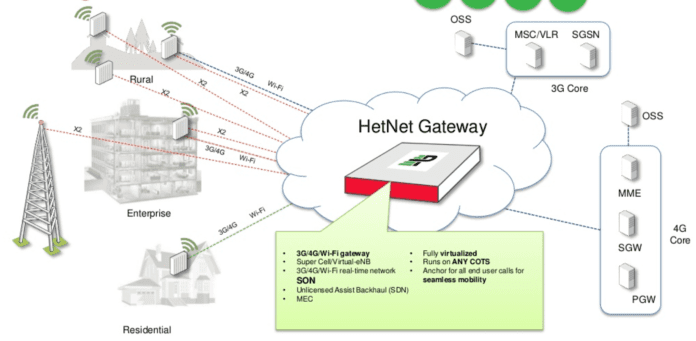Ice Wireless leverages Parallel Wireless’ small cells, HetNet gateways and software-defined radios to deliver rural mobile broadband
In Northern Canada–the provinces of Northwest Territories, Yukon, Nunavut and Quebec–the population density is 0.03 people per square kilometer. A rural population, coupled with harsh conditions, makes this a difficult place to deliver affordable, reliable mobile broadband service. Service provider Ice Wireless is working to address this underserved market in partnership with Parallel Wireless, which focuses on bridging the digital divide through a re-architecting networks of small cells.
To expand its rural network, Ice Wireless is working with Parallel to deploy in conditions where access to backhaul and power can be difficult. Parallel provided its off-the-shelf small cells and related solutions, which is designed to use any available backhaul transport and consume minimum power. The solution set includes Parallel’s multi-RAT node, software-defined radio and HetNet Gateway, which comes with self-organizing network technologies to ease installation.
The CEOs of Ice Wireless and Parallel Wireless both discussed the deployment in the broader context of connecting the unconnected.
Ice Wireless president and CEO Samer Bishay said rural deployments “need to be very cost-effective and easy to deploy. We are committed to providing our customers–regardless of location–with the best possible communications experience so they can continue to thrive.”
“Almost 4 billion people in the world are still unconnected,” Parallel Wireless founder and CEO Steve Papa said. “They are missing out on the ways the internet helps to connect with family and friends, get education, run businesses, acquire better career opportunities, enjoy entertainment and much more.
During Mobile World Congress 2017, Rajesh Mishra, president, founder and CTO of Parallel Wireless, said users, regardless of location, expect the same results from cellular connectivity. “The use cases don’t change. They’re not getting less 4G or 3G. The challenge in rural communities is because existing solutions are so expensive because either the lack of backhaul, or lack of power, or power-based infrastructure.”
Mishra explained that their small small cell solution makes deployment and site acquisition much easier than a macro build, and mesh backhaul can tap into whatever is available–fiber, DSL or satellite, for instance. “We’ve been innovating and trying to bring and blend all these types of backhaul together and also innovating on the software and automation side so that these deployments become really simple,” he said. “What we are trying to get to is if a local TV antenna installer can install an antenna…you want them to be able to install our small cells. They’re not RF engineers, so they don’t know what’s the propagation, what’s the interference. We take care of all that automation with our software.”

